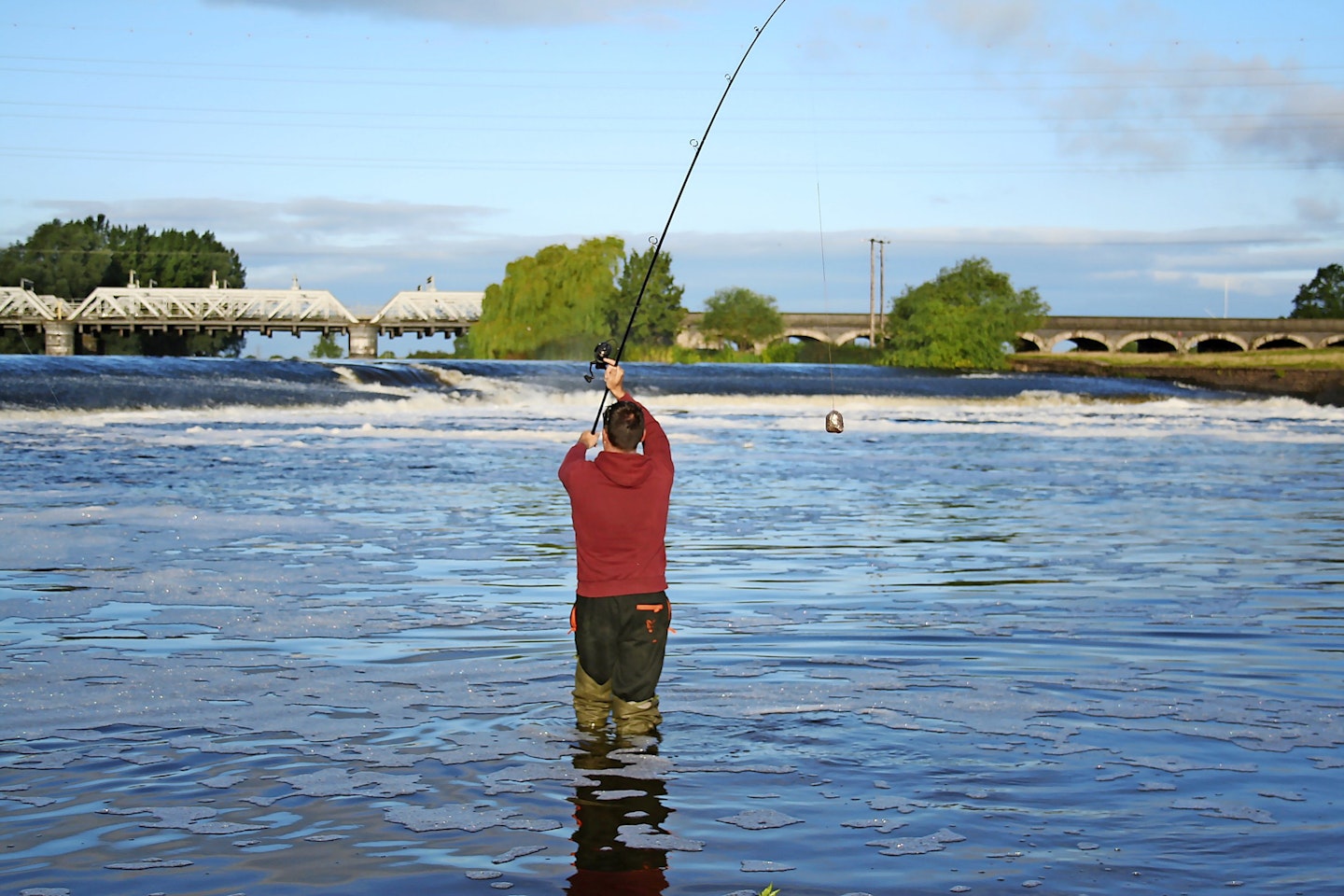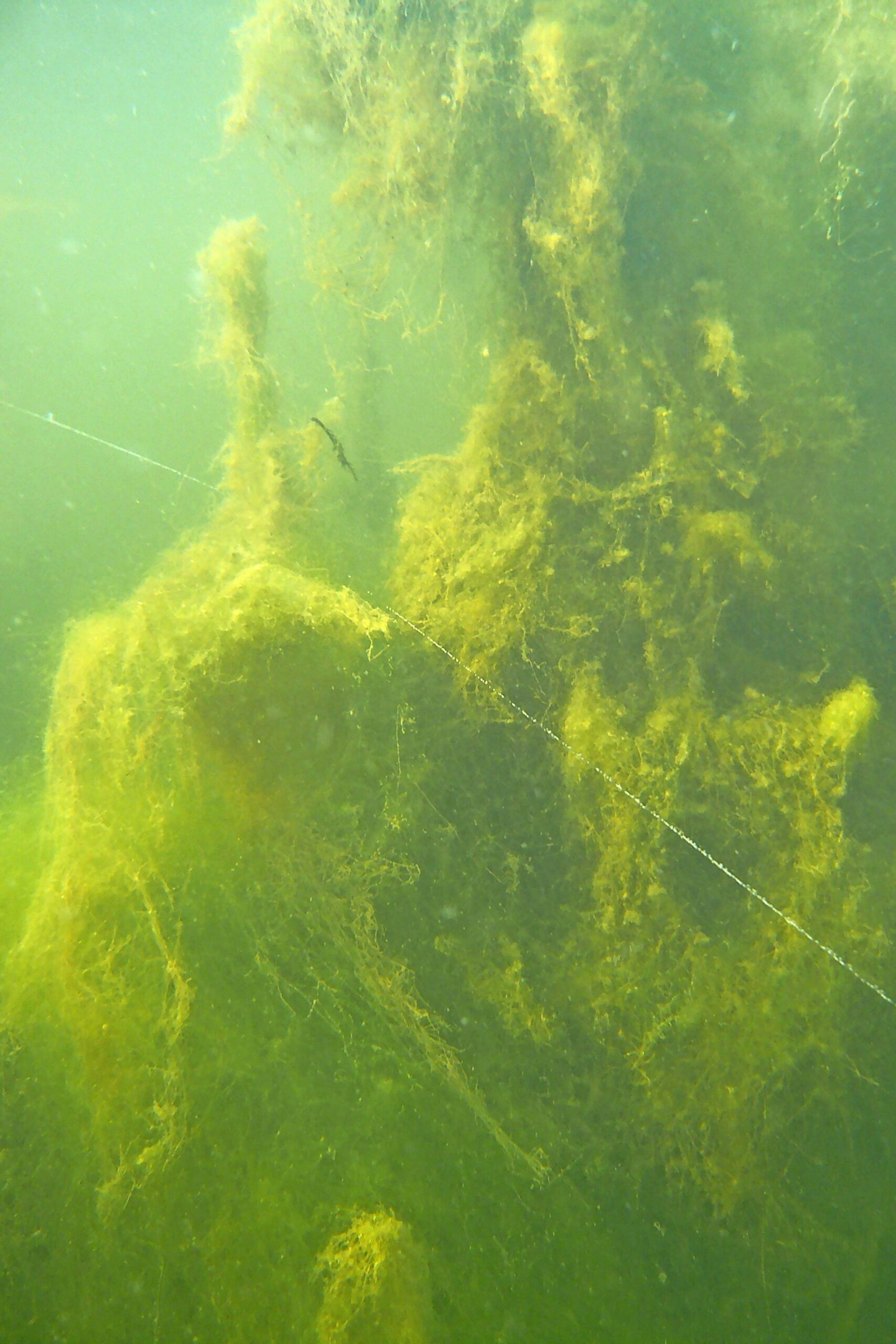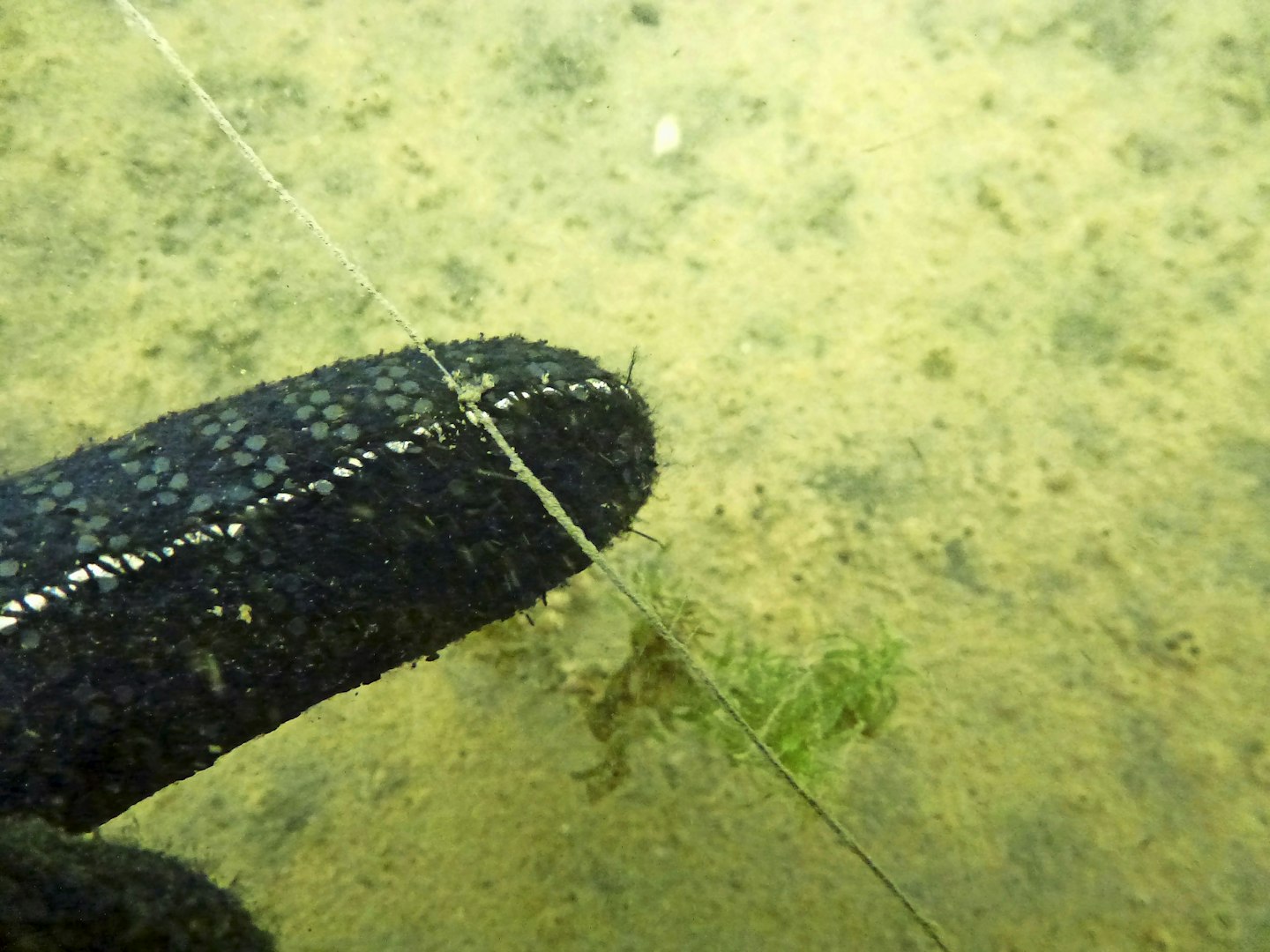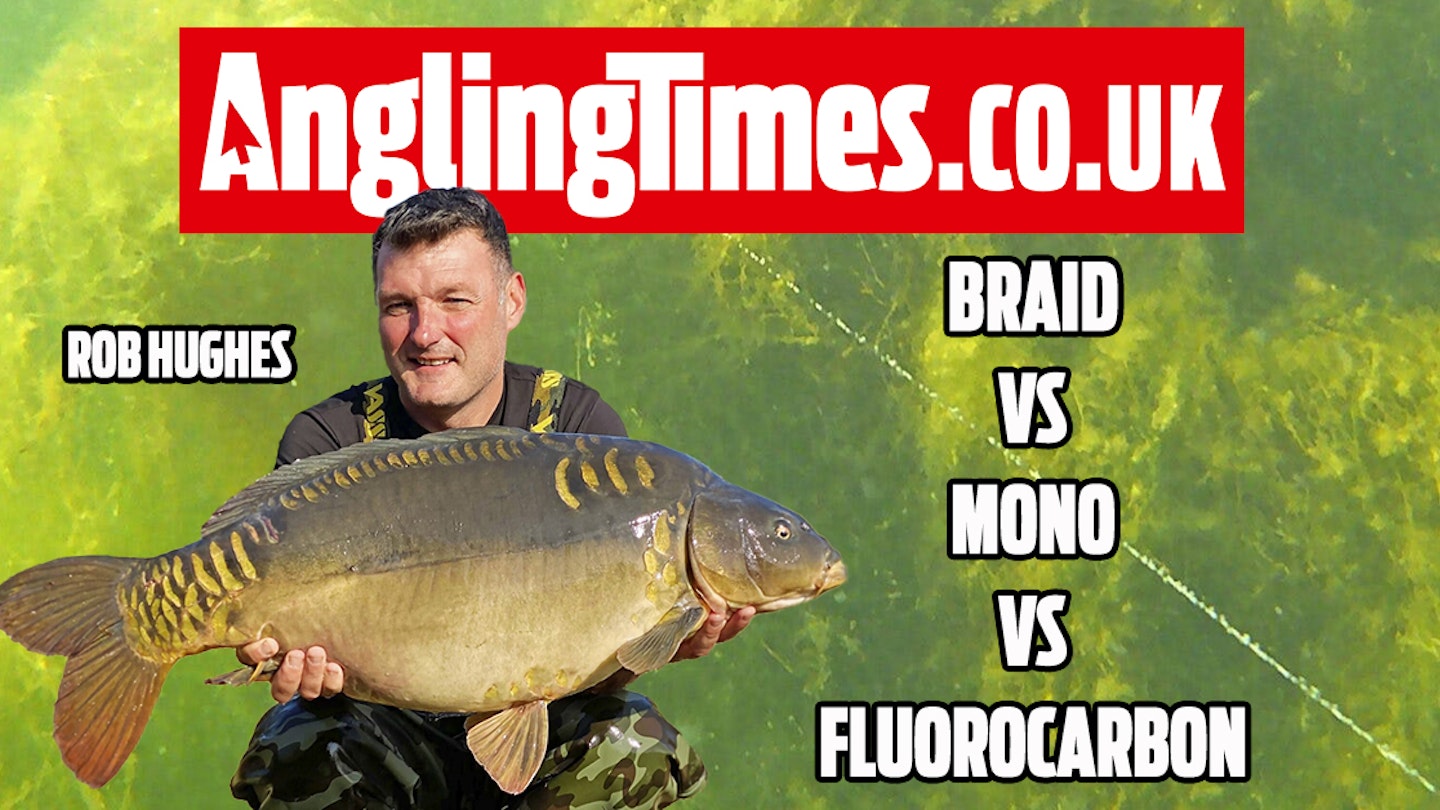Mainline material – it’s a choice we have the privilege to make, and it’s very often a discussion point between anglers. But which is best? Is there a ‘one size fits all’ or do we need to use specialist options for different fishing situations?
It’s a bit of a pain chopping and changing spools, all the time, so we usually make do with what’s on there. I have to confess, most of the time I’ll fish with monofilament straight through because I feel that it’s the best all round option. There are times, however, when braid is required or when fluorocarbon will provide an advantage. The key is knowing which to use, and when.
CHECK OUT OUR BUYER'S GUIDE TO THE BEST FISHING REEL LINES HERE.
CASTING
All three materials cast very differently to each other. It’s fair to say that nylon is the all-round best casting material but, if extreme distance is required, braid can deliver those extra yards. However, braid is susceptible to tangles and ‘wind knots’, especially when dry or using fine braid in very high-pressure conditions. Fluorocarbon is more of a stiffer material, and it tends to flatten though the rod rings and slap against the blank, so it’s only really good for shorter distances.
Verdict_:_ Mono wins this one.
WANT TO IMPROVE YOUR CASTING? CHECK OUT THIS SUPERB EXPERT TIPS & TACTICS ARTICLE.

COST
Mono wins this one hands down too, as it is miles cheaper than all the other options. In fact, let’s face it, monofilament line is incredibly cheap.
You can buy bulk spools like Daiwa Sensor that will easily last a year or two and will fill three rods for under a tenner. Braid is the most expensive, but that extra cost can be worth it when you need it.
Verdict: No competition. Another for mono!
WEED
Weed is the bane of many a carp angler’s life, and the right choice of line makes a huge difference to whether you get fish out of weed or struggle. Monos are the most widely used, but are also probably the worst in a weedy situation.
All monos stretch, so they don’t allow you to put as much pressure on a fish as you may sometimes need. There’s also the strength. Mono, especially in the lower breaking strains, tends to be weaker. Fluoro is very good in weed, as it’s both abrasion-resistant and has very low stretch.
Verdict: Braid is probably the best option as it is strong and damage-resistant. Also, the direct contact you get makes it so much better to control the carp.
CHECK OUT OUR BUYER'S GUIDE TO THE BEST FISHING BRAIDS HERE.

STRETCH
Stretch can be a good or a bad thing, depending on how you are fishing. Mono stretches, braid doesn’t, and fluoro has a very light ‘give’. With stiff rods, stretchy monofilament line makes playing fish so much easier. Until you get used to it, braid is very direct and can be unforgiving. However, if you’re fishing up against an obstacle, snag or weed, then you want to be in control of the fish as much as possible, so braid is the better choice. Once again, it’s down to the angling situation.
Verdict: One for fluorocarbon here as it sits in the middle of the two degrees of stretch.
INDICATION
Not knowing you’ve got a bite is a disaster, and line choice can have a huge effect on this. Two things make the difference. The first is how the line lays over obstacles.
You can buy floating or sinking braid. Floating braid can be pulled into a bow by wind, and the sinking version can drop into weed. Both will affect indication. Braid is always best fished tight. Fluorocarbon can sink, so the same thing applies, but it doesn’t catch as much.
Mono can stretch, and this can have a huge effect on your bite indication, so it is a bit of a case of ‘horses for courses’.
Fluoro and braid are primarily much better for indication than straight mono, as the lack of stretch usually means better indication at the rod end.
Verdict: Fluoro wins for me.
SINK OR SWIM
Following on from indication, whether you want your braid up in the water or down in the water will also affect which is better. Mono is more or less neutral, with a tendency to sink. Braids trap air in the weave, and even sinking braids prefer to float. Fluorocarbon is slightly heavier than nylon, and the trend is for it to sink.
Weed, obstacles, boats, visibility to fish, all have a bearing on line lay and also catch rates, so it’s a bit of a draw, with this one depending on your fishing situation.
Verdict: If I had to pick a winner, it would be neutral nylon mono.
SHOULD YOU FISH TIGHT OR SLACK LINES WHEN CARP FISHING? FIND OUT HERE.

LEADERS
There is no reason at all why you can’t use leaders, and on occasion this is the best of both worlds. A 35lb braided leader is fantastic for casting and is also pretty good at the rod end if there are snags like bars or weedbeds. If there are stumps around, a heavy nylon leader will be better because it won’t dig into the saturated wood as much as a braid.
A fluorocarbon leader is a great option if the fish are line shy and you need your end tackle and the line close to it to be disguised and out of the way. All three have their benefits but, where leaders are permitted, a fluorocarbon leader can be a really good edge, especially in clear water or for casting extra distance.
Verdict: Split decision - fluoro for all round, braid for casting.
VISIBILITY
One of the main reasons for using fluorocarbons is that they are thought to be invisible underwater. Technically this isn’t true. It looks invisible when looked at it from above, but when you look sideways it can be seen. Hence the reason why we developed Trans Khaki fluoro. Some nylons blend in well, depending on the colour of the water, whereas braid does tend to stand out.
The other point with braid is that it attracts waterborne particles and dust much more than nylon. Fluorocarbon does the same, so although they all look good in the water, after a while they do tend to get dirty.
Verdict: Fluorocarbon wins.
LINES CAN 100% SPOOK CARP. CHECK OUT THIS EXPERT ARTICLE ON HOW TO CATCH PRESSURED FISH.

USABILITY
This is one of most relevant issues in the comparison argument. All lines have their place, but if they’re not particularly usable, they may well be used in the wrong way or quite simply just make life too difficult. I love the indication you get from fluorocarbon but I find the usability level very poor. It doesn’t cast well and clatters through the rings.
Braids can be excellent, but many fisheries ban them because they are very direct to the fish, and can cause issues if you play the fish too hard. Nylon tends to sit in the comfortable middle ground a lot of the time, which is why it’s the most popular choice.
Verdict: Nylon wins this one.
FINAL VERDICT
The Scores
• Mono - 4 points
• Fluoro - 3.5 points
• Braid - 1.5 points
STILL NOT SURE WHICH TO PICK? CHECK OUT OUR BUYER'S GUIDE TO CARP LINES.

This page is a free example of the amazing content Angling Times Members get every single week. Becoming an Angling Times Member gives you access to award-winning magazine content, member rewards, our back issue archives, bonus content and more! Join our fishing community and find out more today!
